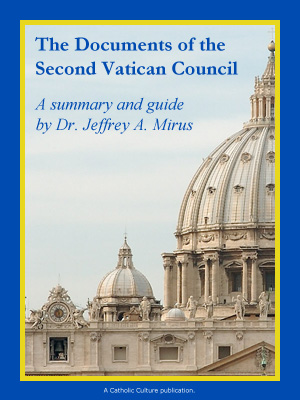Vatican Reform, take two: behind two new papal appointments
By Phil Lawler ( bio - articles - email ) | Jul 06, 2018
“Personnel is policy,” the political analysts tell us. With that maxim in mind, let’s examine the importance of two appointments made by Pope Francis in recent days: the appointments of Bishop Nunzio Galantino as president of the Administration of the Patrimony of the Apostolic See (APSA) and of Paolo Ruffini as prefect of the Secretariat for Communications.
The latter appointment is by far the more important; indeed the appointment is a historic event. For the first time, a Vatican dicastery will be headed by a layman, rather than a cardinal or an archbishop.
And this is not just any dicastery! The offices of the Roman Curia have traditionally been given different titles, denoting their relative importance; a “pontifical commission” had less clout than a “pontifical council,” and the latter ranked below a “congregation.” Ordinarily the head of any Vatican “congregation” would be a cardinal, and if a “mere” archbishop was given the job, his name would immediately appear on the list of prelates likely to receive a red hat at the next consistory. Then, above all the “congregations” on the Vatican organizational chart, there was on “secretariat”—the powerful Secretariat of State, which effectively ruled over the other offices of the Curia.
These hierarchical distinctions became blurred when Pope Francis undertook his reforms of the Roman Curia. Still, when the Pope created the new “Secretariat for the Economy,” the title of the new office suggested that it would have real clout—that within its own area of expertise, it might even rival the power of the Secretariat of State. A “secretariat,” after all, was an office with real power. Similarly, the creation of another new “secretariat,” to merge and guide the Vatican’s different communications efforts, suggested that the Holy See was recognizing the vital importance of coordinating efforts to present the Church’s message to the outside world.
Things have changed, however, as the hopes for thorough reform have encountered the realities of life in the Vatican bureaucracy. The Secretariat for the Economy has been slowly gutted, its most important powers handed back to APSA, the office that controls the Vatican’s enormous and secretive real-estate empire. And the Secretariat for Communications? It is significant that in announcing Ruffini’s appointment, the Vatican said that he would head the “dicastery” for communication—using the generic term for a Vatican office rather than the term that suggested a higher level of influence. For that matter, in the day’s announcements, the Vatican press office (which, remember, falls directly under the Secretariat Dicastery for Communications) listed Ruffini’s historic appointment after the announcements of a new auxiliary bishop in Montpellier, France, and a new eparchial bishop for Slovak Catholics in Canada.
What’s happening here? Is Ruffini being given control of an office with less influence than his predecessor, Msgr. Dario Edoardo Vigano, originally enjoyed? That’s a distinct possibility. The re-tooling of the Vatican’s communications efforts had proceeded very slowly, and not at all smoothly. In March, Msgr. Vigano was forced to resign after it was discovered that his office had released a doctored text of a letter from Pope-emeritus Benedict, in a ham-handed attempt to generate positive publicity for Pope Francis. That clumsy move backfired, obviously, and the reputation of the Vatican’s shiny new public-relations machine was badly dented. In this context, the appointment of Ruffini—a lay professional with a background in communications—can be seen as a second effort by Pope Francis to re-start the process that the new secretariat/dicastery was designed to carry out.
Can Ruffini succeed, where Msgr. Vigano stumbled? The answer to that question will depend heavily on whether Ruffini is given the latitude to carry out his plans, or kept under the tight reins of the Secretariat of State.
As for the other key appointment, Bishop Galantino has been clearly chosen as a favorite by Pope Francis: plucked from a relatively obscure diocese, first to be secretary-general of the Italian bishops’ conference, now to head APSA. Now he takes control of the office that successfully resisted the reforms proposed by the Secretariat for the Economy—the office that has become notorious (as even the Pope himself conceded) for its sweetheart leases, no-bid contracts, and undisclosed assets. If Bishop Galantino is the man the Pope trusts, then his appointment, too, can be read as a second effort to re-start the process of reform—in this case, the much-needed drive to achieve financial transparency.
All comments are moderated. To lighten our editing burden, only current donors are allowed to Sound Off. If you are a current donor, log in to see the comment form; otherwise please support our work, and Sound Off!








